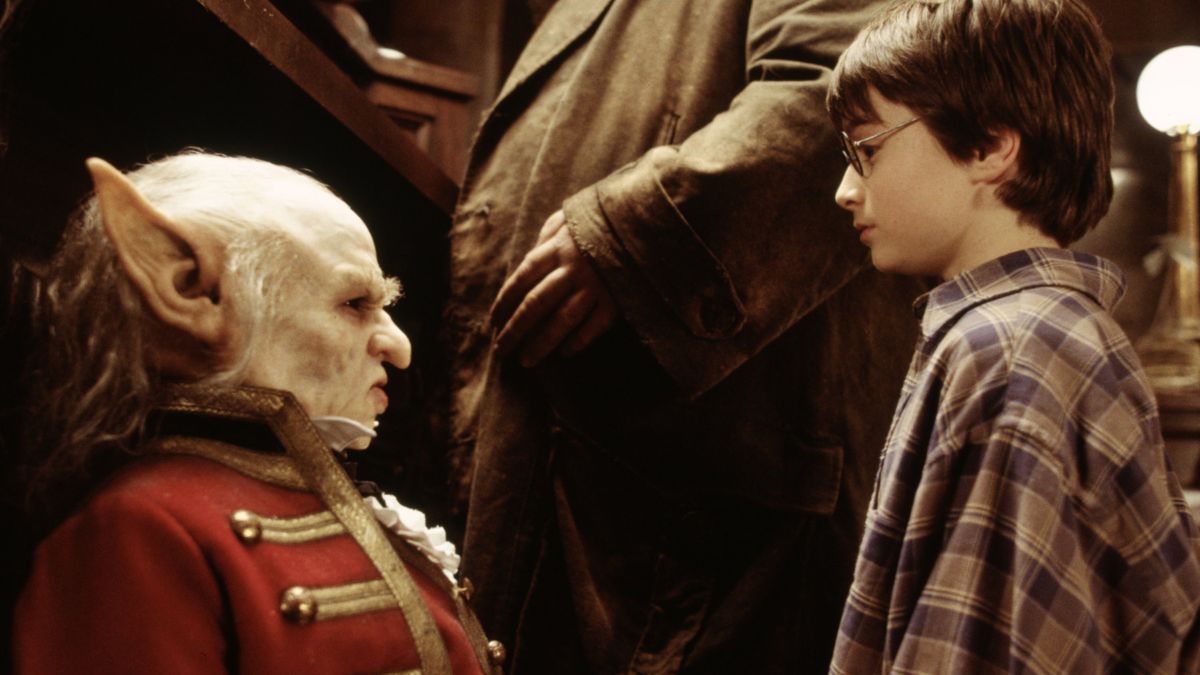Long before its release, Hogwarts Legacy was mired in controversy. From JK Rowling’s problematic opinions to the revelation that a prominent title designer was perpetuating hateful content on his YouTube channel, a cloud surrounded the game that led many to call for a boycott.
One of those controversial talking points about the game is the accusation of anti-Semitic elements in the plot and lore. This isn’t the first time such allegations have been made in the world of Harry Potter, but in the case of Hogwarts Legacy, it adds more fuel to discussions about the game. Here’s what you need to know.
Goblins, traditions and anti-Semitic tropes
Image via Warner Bros. Pictures
The world of Harry Potter is teeming with a variety of magical creatures and races, from the usual swamp humans to centaurs, ghosts and giants. One such magical race is the goblins, short people who can wield wandless magic. Unfortunately, this natural proclivity for magic has historically brought them into conflict with human wizards and witches, who have done everything to diminish their abilities and rights for centuries.
Many inside and outside of the Jewish community have linked this troublesome Goblin history to certain characteristics of the race that resemble the anti-Semitic tropes present in the depiction of the Jewish people throughout history. The long hooked noses and extensive control over the wizarding world’s banking infrastructure are often combined with a greedy and deceptive nature, which will be familiar to anyone who has seen anti-Semitic cartoons from the 20th century and before.
Related: JK Rowling’s Transphobic Views and Their Effect on Hogwarts Legacy: The Controversy Explained
JK Rowling has received criticism for her portrayal of goblins in her books over the years, and frankly, it reveals at best a thoughtless and lazy adoption of many problematic tropes that arguably perpetuate harmful stereotypes, even when they apply. to a fictional magical race. . Hogwarts Legacy is heavily goblin-focused, as it takes place during one of the goblin rebellions that have occurred periodically throughout the history of the wizarding world, so it also challenges the use of these troubling tropes. However, the game makes additional decisions that have still outraged some players.
The Ranrok Rebellion, Child Abduction and Blood Libel
Gamepur screenshot
The plot of Hogwarts Legacy is set during the Ranrok Goblin Rebellion, an uprising led by the eponymous Ranrok in 1890. Although many of the goblins involved joined the rebellion to protest the prejudice and discrimination inflicted upon them by humans, Ranrok himself is described as greedy. . and a hate-filled individual in search of forbidden magic that would allow him to completely wipe out humans.
Players can choose to align themselves with Ranrok, but the game explicitly portrays this as a bad decision, aligning those players with the Dark Wizard faction. On top of that, Ranrok and his dark wizard allies in the Rookwood gang have a plan to harness the power of this forbidden magic by kidnapping the player character (who is a teenager) and extracting and using their blood. This last detail ties uncomfortably close to the “blood libel” conspiracy theories that have targeted Jewish communities around the world for centuries, in which Jews were accused of kidnapping and murdering Christian children to use their blood in sacrilegious rituals.
The presence of these themes in the game does not necessarily mean that everyone involved is a rabid anti-Semite. Again, though, I’d suggest that at best the writers were comfortable throwing them into the story without considering, or caring about, the long-term consequences of pairing a blood ritual mystique with a race of magical people who already bear an uncanny resemblance to anti-Semitic cartoons.
The problem of the shofar

Gamepur screenshot
Shortly after the game’s release, some players took to social media to express their outrage at a particular goblin artifact in the game. The artifact in question bears a significant resemblance to a shofar, a Jewish musical instrument used in certain religious ceremonies. The artifact is described in-game as designed to rally troops and “generally annoy witches and wizards”, and references another goblin rebellion in 1612. This particular date has drawn more anger among fans, as it coincides with real life. Fettmilch uprising, which resulted in a brutal pogrom against the Jewish quarter of Frankfurt, Germany.
As always, each individual data point here could be excused as error or coincidence, but many players are seeing disturbing patterns when taken together. While this is more likely to be unconsciousness than sleight of hand, it worries a lot of people, especially some Jewish (probably now ex) Harry Potter fans who are looking to escape into a wizarding world.
Source

